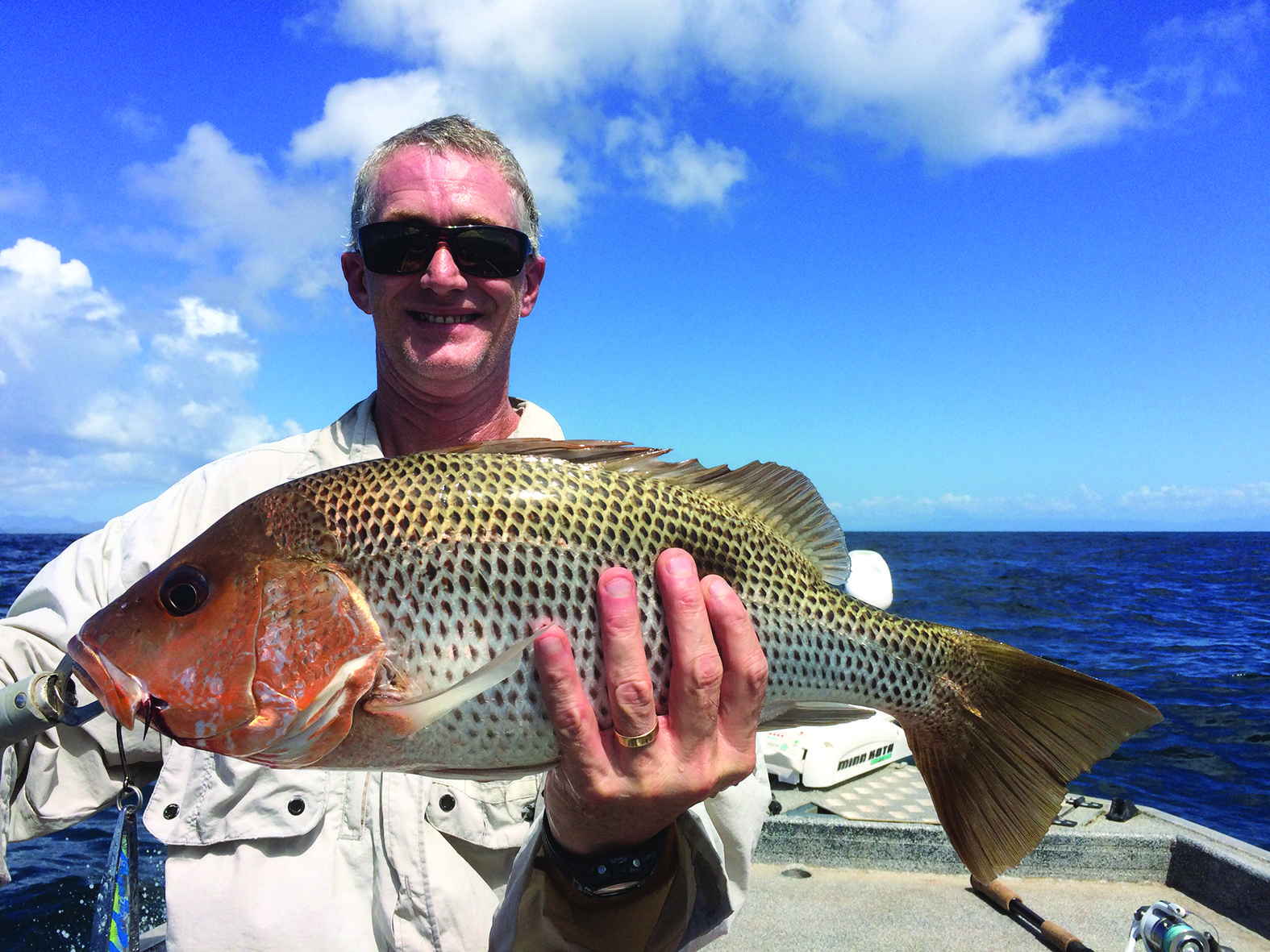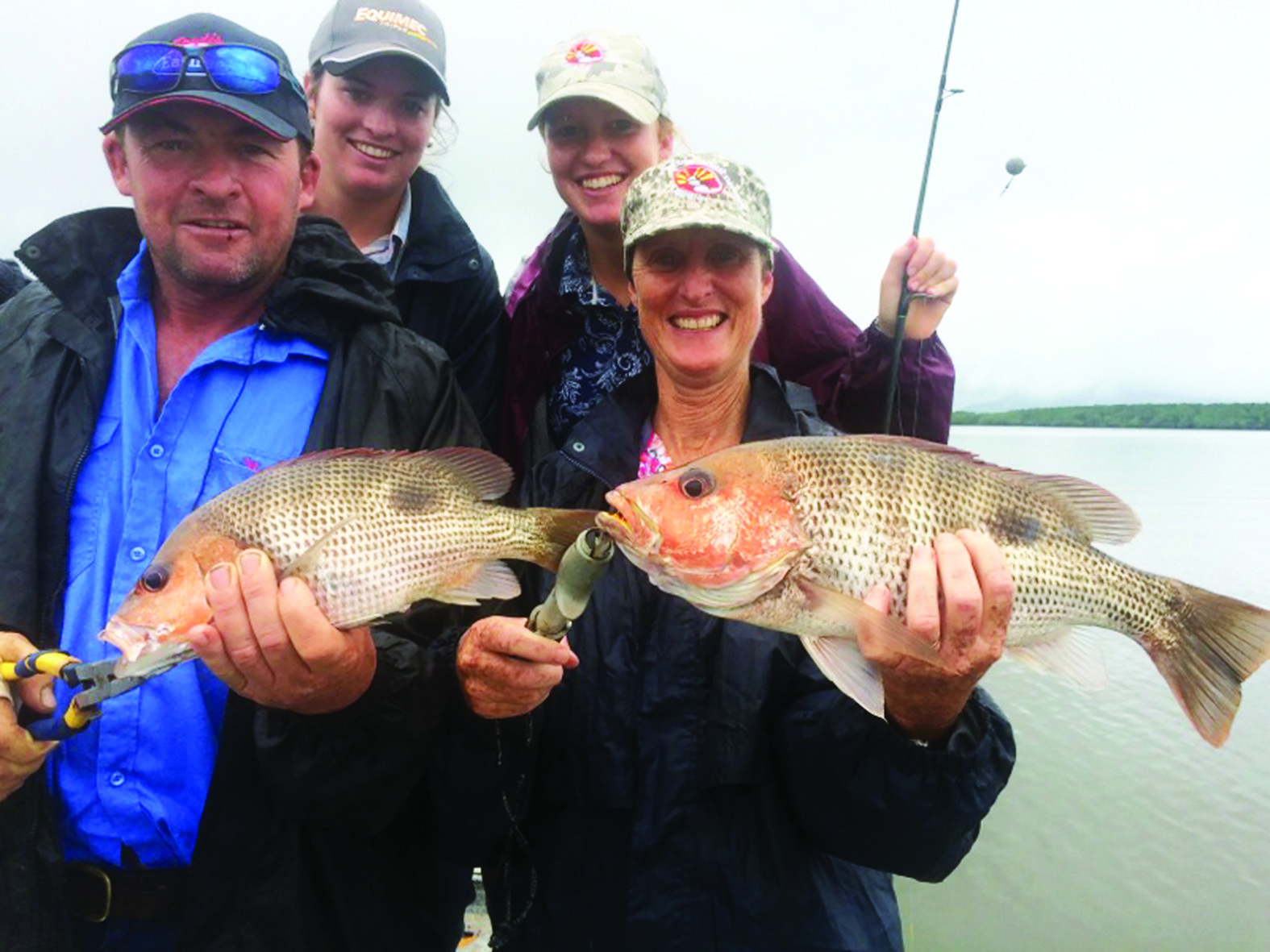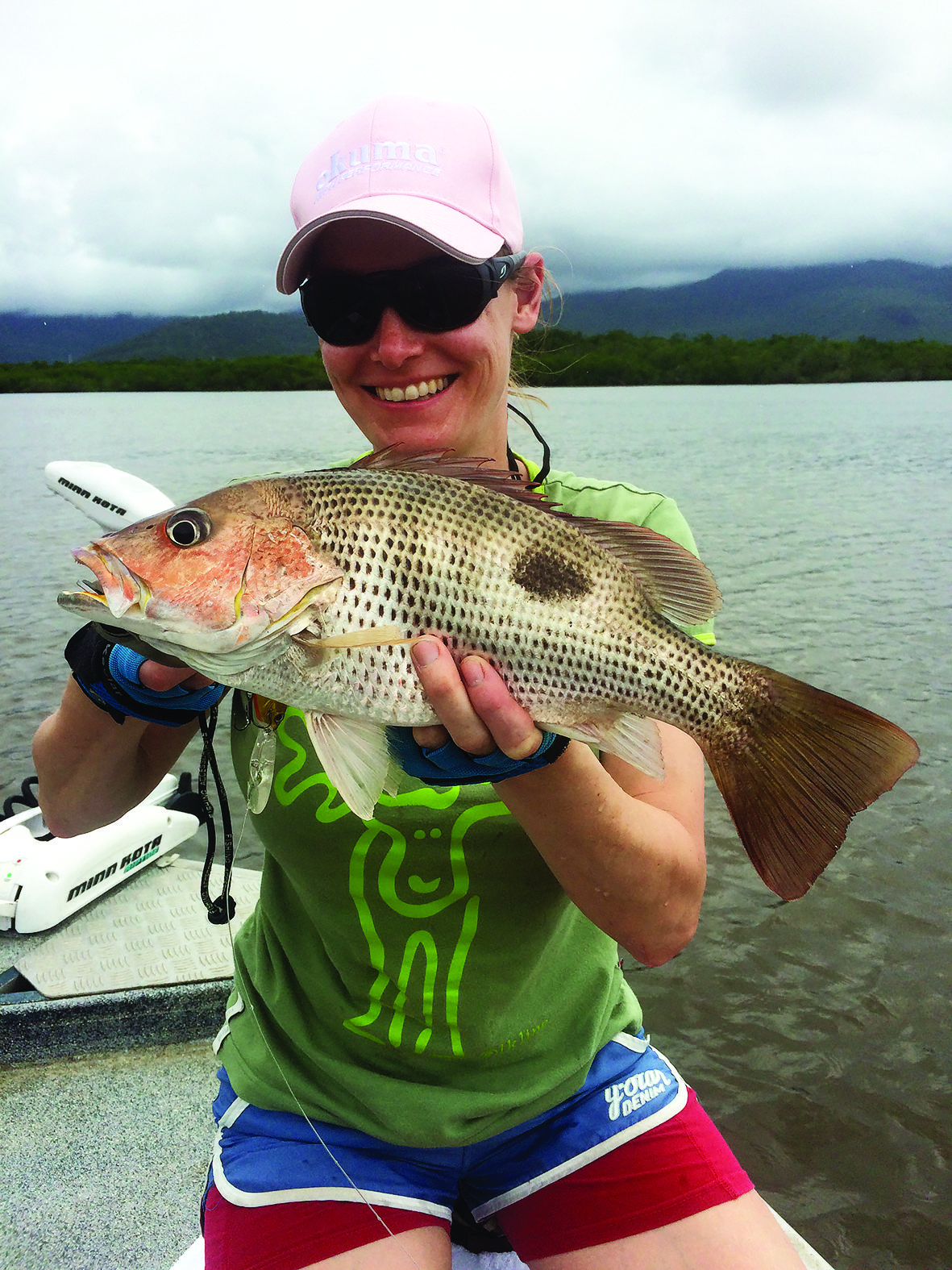IN this article I will give you tips, techniques and hints on how to catch fingermark, otherwise known as golden snapper or locally as choppers (probably something to do with their nasty teeth).
Fingermark are fairly iconic to north Australia and they are aggressive, hard-hitting and hard-fighting fish.
But they are also very good table fish, which makes them a popular target. Unfortunately, fingermark grow very slowly and are several years old by the time they reach legal size at 35cm.
We hook a few as by-catch when targeting mangrove jack and barra in the creeks while casting lures, but I have achieved the best results by fishing isolated rocks in Hinchinbrook Channel and deepwater holes. It is important to sound around in the deep water, looking for hard bottom consisting of rocks and ledges because this is where fingermark tend to hang out in big numbers.
Once you have located some good-looking structure, fingermark will respond to a variety of techniques.
If you have an electric motor with a spot lock function, you can hold the boat right on top of the fish while you hop plastics and vibes on the bottom and in their faces. You can also net decent results by trolling deep-divers that bump along the rock ledges.
When trolling for fingermark over these ledges I find they will only bite when the lure is going in a particular direction. This direction can change from day to day, so try trolling over the structure at all angles to see which direction gets you the bites. Once you have worked it out, just keep going over the fish in that same direction.
Make sure you give the bite mark a wide berth when moving the boat to start your troll again because boat noise can put these fish off.
Another very effective technique for catching fingermark is to use bait. Fingermark absolutely love large live herring and squid. Herring can be caught in a cast net around Hinchinbrook Island and up the creeks. They give their position away with lots of tail flicks on the surface and it is simply a matter of throwing the net where you see them flicking. It is important to get your herring into a plumbed bait tank as soon as possible because they die very quickly once out of the water.
It is also important to have your bait tank pump going flat out when you first capture the herring because this will help revive them from their ordeal and flush the lost scales and slime out of the tank, keeping them in tip-top condition.
Squid are much harder to catch and I have only caught them at night while using a squid light and squid net. A squid light is an LED light that floats on the surface beside the boat. A dimming switch inside the boat allows you to control the brightness of the light. When you first pull up you run the light as brightly as possible to attract the squid.






When fishing for fingermark with herring it is important to position the boat just up-current of the rock or ledge you intend to fish on. A simple paternoster rig and a 5/0 wide gape hook is my preferred setup. It is simply a matter of pushing the hook through the hard, gristly part of the herring’s nose just in front of their eyes and dropping them to the bottom.
This method keeps them alive for as long as possible. It is very important that when you do get a bite you don’t strike too soon because doing so can spook the fingermark. It is much better to lose your bait than strike too soon.
Some days the fingermark will just slam the herring with hardly a nibble beforehand and on other days they will pick at the bait like a little bream until you hook them and they just about pull your arms off.
With the squid baits I run a two-hook snood rig with 6/0 octopus hooks. I place the top hook in the tip of the squid’s hood and the bottom hook in the top of one of its tentacles.
You generally get bigger fingermark at night on squid baits but we have also landed some fantastic fingermark during the day using the techniques discussed.
In terms of tackle, we just use our barra and jack outfits with 20lb braided main line and 40lb fluorocarbon leader, which do the job nicely. However if you are fishing for big fingermark near the sugar loader pylons, I recommend upgrading to 50lb braid and 70lb leader to pull those beasts out.
I hope this has given you a few ideas on how to catch fingermark, as they are truly great fish. Just remember to only take a couple for a feed and release the rest to ensure the sustainability of this great fish. Until next month, get to Hinchinbrook and Crack-a-fingermark!
 Bush 'n Beach Fishing Magazine Location reports & tips for fishing, boating, camping, kayaking, 4WDing in Queensland and Northern NSW
Bush 'n Beach Fishing Magazine Location reports & tips for fishing, boating, camping, kayaking, 4WDing in Queensland and Northern NSW








